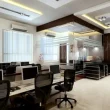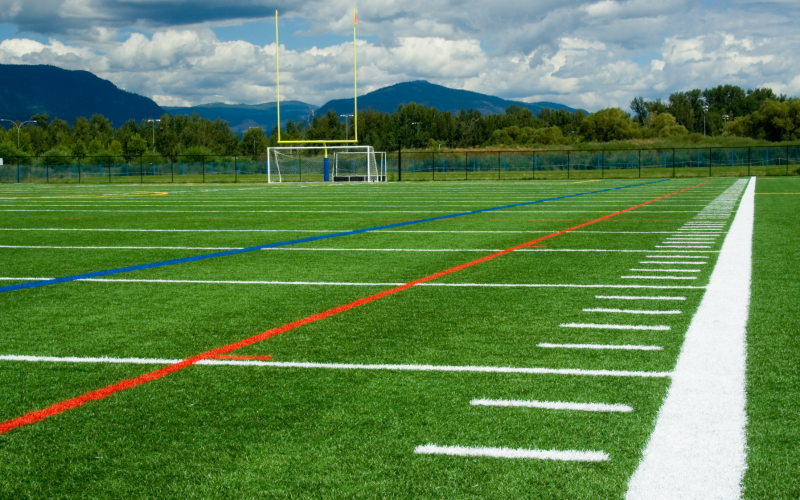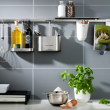Football turf has become a go-to solution for schools, universities, and sports complexes aiming to offer reliable, year-round field access. With synthetic turf fields lasting longer and demanding less maintenance than natural grass, it’s no wonder more organizations are investing in them.
But for most planners, the big question remains: how much does it actually cost to install a football turf field in 2025?
In this article, we’ll unpack everything you need to know—from the upfront investment to ongoing expenses—to help you understand what to expect from your turf project this year.
What is the Price of Football Turf? Latest Rates
As of 2025, the average cost to install a full-size football turf field ranges from $750,000 to $1.6 million. This pricing can fluctuate based on several variables like turf quality, size of the field, groundwork needs, labor costs, and customization.
Let’s break down where that money goes:
-
Turf Material: The turf itself costs between $5 and $12 per square foot depending on fiber type, durability, and infill system.
-
Base Construction: Excavating and preparing the field base—including drainage and foundation layers—can add another $4 to $6 per square foot.
-
Installation Labor: Professional installation ranges from $150,000 to $300,000, depending on your location and the complexity of the site.
-
Infill: Materials such as rubber, sand, or organic alternatives can cost anywhere between $50,000 and $100,000 for a full-sized field.
-
Add-ons and Extras: Custom logos, multi-sport lines, LED lighting, or shock pad layers can add anywhere from $20,000 to $150,000, depending on your preferences.
Want to see a full pricing guide with specific examples?
How Much Does A Turf Football Field Cost
Factors That Influence Your Football Turf Budget
Not all football turf projects are created equal. Several variables affect how much you’ll end up spending:
-
Field Dimensions: While a standard American football field measures about 57,600 square feet, some organizations opt for additional space for sidelines, training zones, or multi-sport overlays.
-
Site Preparation Needs: Projects built on flat, ready-to-use land cost less than those requiring excavation, grading, or removal of old turf or debris.
-
Turf System Choice: Modern turf options offer varying thickness, blade shape, drainage systems, and infill blends. High-performance turf systems cost more but offer longer lifespans and better safety ratings.
-
Design & Branding: Custom team colors, logos, and end-zone graphics increase visual impact—but also increase costs.
-
Regional Labor Rates: Installation costs vary depending on local wages, labor availability, and transport fees.
For guidance on planning your turf project, Lakota Design Group provides professional consultation, custom field design, and construction services. With experience across schools, parks, and sports facilities, their team can walk you through budgeting, permitting, and installation.
Ongoing Costs: Maintenance & Resurfacing
Although synthetic turf requires less daily upkeep than natural grass, it still needs regular attention to stay in good condition and meet safety standards.
Annual Maintenance:
Expect to spend between $6,000 and $10,000 per year on routine maintenance, which may include:
-
Brushing and leveling infill
-
Removing debris and surface cleaning
-
Repainting lines (if needed)
-
Checking seams and addressing small repairs
These costs are a fraction of natural grass upkeep, which can exceed $25,000 to $35,000 annually, factoring in mowing, irrigation, fertilization, and labor.
Resurfacing After 8–10 Years:
Most synthetic turf fields last about 8 to 10 years, depending on usage and upkeep. After that, resurfacing becomes necessary. This process typically costs between $350,000 and $600,000, assuming the original base remains in good shape.
This is still significantly cheaper than replacing an entire turf system and helps extend the life of your original investment.
Artificial Turf vs. Natural Grass: Is It Worth It?
If you’re weighing synthetic turf against traditional grass, here’s a quick comparison:
| Category | Synthetic Turf | Natural Grass |
|---|---|---|
| Install Cost | $750,000–$1.6 million | $400,000–$700,000 |
| Annual Upkeep | $6,000–$10,000 | $25,000–$35,000 |
| Usable Hours | 2,500–3,000 hrs/year | 800–1,200 hrs/year |
| Weather Resistance | Playable year-round | Limited by rain/drought |
| Lifespan | 8–10 years (with resurfacing) | 2–3 years before re-sodding |
The upfront cost of turf is higher, but if your field gets used frequently, turf pays off quickly through durability and lower maintenance.
Budgeting Tips for a Successful Turf Project
Before jumping into construction, here are a few key planning tips:
-
Set Clear Priorities: Are you building a basic practice field or a branded stadium experience? Know what features are essential.
-
Gather Multiple Bids: Costs can vary widely between contractors. Always compare quotes and ask for portfolios.
-
Check Warranty Terms: Good turf systems come with 8–10 year warranties. Don’t skip the fine print.
-
Account for Long-Term Costs: Include maintenance and future resurfacing in your overall financial plan.
Conclusion
So, what is the price of football turf in 2025? As outlined in this breakdown, the average field costs between $750,000 and $1.6 million depending on your choices and location. While the initial investment is substantial, turf offers long-term benefits like lower upkeep, year-round playability, and greater field durability.
If you’re planning a new field or need help building a budget, contact us at Lakota Design Group. Our team is ready to help you turn your vision into a long-lasting, high-performance football field.












